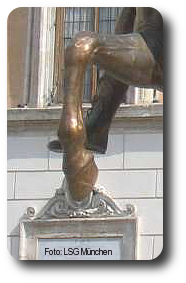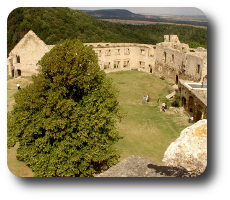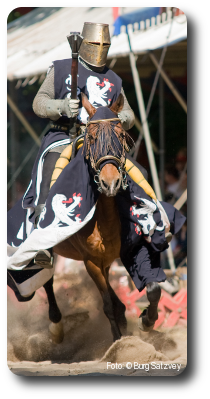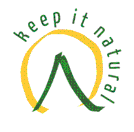Shoeing vs. bare footed horse?
by Jörg Weber, barhuf-thueringen.de
... the never ending story - or: There is another way
There are possibly few topics within the horse world that polarize as much as the question regarding shoeing. Unfortunately this question is discussed very emotional and therefore far away from objectiveness and reasons. It's a pity - especially for the horses - because every argument controlled by emotions is blocking good solutions and result in "religious war". However nobody can benefit from this - fewest the horses. My opinion as an author is clearly pro barehoof. Nevertheless, I'd like to try not to repeat all the umpteen times discussed facts and proofs but to contribute a - hopefully reproducable - story from my personal experience. The relevant sources that provide reasons for barehoof horses can be found in the link collection on my website. However I'd like to point out particularly Tina Gottwalds website pro-barhuf.de - there you'll find very objectively discussed aspects which I can't and I don't want to repeat here.
How it all began ...

Humans have been using horses for riding for about 3,000 years. However, the shoeing of hooves with iron shoes rose up much later - namely about 1,000 years ago at the start of the Middle Ages in Europe. So it does not go along with the discovery of iron and its forgeability as this already has been known since the Iron Age. Even the Romans did not know shoeing although they intensely used horses and built military roads of stone through their empire using them for transportation and touring around the world. Not a single ancient portrayal of horses - with or without rider - and no matter weather of Greek or Roman origin, shows the smallest hint regarding the shoeing of horses. What was the reason for the shoeing coming up with the begin of the Middle Ages? What had seriously changed?
The Middle Ages

The beginning of the Middle Ages is also the beginning of the so called age of chivalry - or historically correct expression: feudal order. Knights were lieges of their particular king, were feoffed with estates and moved their residences to well-fortified castles. For the knights did not get their feud for fun but had to fulfill military service to their liege lord if he called for arms. Because of choosing the typical knight castle as fortified residence the living conditions of horses changed abruptly. On the high plateaus that were considered for castle buidling the space was very limited. The horses had to deal with small stables - often in stalls - and hardly saw their pastures. This is how they were available to the knight and his servants at all times. The result was lacking movement. Without movement the hooves are getting poor within short time, they become deformed and degenerate. This was also observed at captured mustangs within the USA and has been described many times. At the same time from the horses as riding animals huge efforts were demanded. For they had not only to carry the knight, his weapons and his heavy armor but also their own armor that often was used. This could be another parameter that had negative effects on the hooves.

Therefore something had to be done to keep the horses "usable". At some point during this time the iron shoe was invented as permanent hoof protection. Thereby people knew at that time that they did no good to the animals but created usability for the humans at the cost of health. Old educational books for farriers always point this out clearly.
"The shoeing of hooves is rather a way to make capital out of the horses.... The question wether shoeing is the way to keep the hooves healthy can be negated with good reason. Experience has shown us, that the longer the horses have been shoed the more disadvantageous is the influence on the hooves." Quote from educational and reference book of horse shoeing craft in 1861
Rural use and transportation
After this "chivalric initial start" the shoeing of horses became more and more accepted. At first in transportation. You have to keep in mind that horses were predominant motion power and at the same time cities and crafts developed. Paved, cobbled roads became more and more the usual appearance on one side - on the other side more and more effort was demanded from the animals than in a natural environment (15 - 30 kilometres per day without load!)
Regarding the use of horses in farming the situation was different. The horses were shoed and mostly kept in stalls as well. Dependent on the season the horses had to work about 12 to 14 hours a day. The following recovery phase had not such disastrous effect as the horses were in desperate need of rest. In addition the horses were mostly barefoot during the winter as there was less need for rural work and it saved costs. Possibly this led to an unintentional period of regeneration regarding the hooves.
This is the initial situation in short and rough words. This situation had lasted basically unchanged until the end of the Second World War. In fact the knights were replaced by cavalry but this didn't change the general situation. However, when the Second World War had ended the need for workhorses dropped caused by the technical development within the two main use areas. On one hand, the army did no longer need the cavalry and on the other hand traction engines replaced the horses in agriculture and forestry. In transportation the number of horses already decreased since the First World War - maybe except from cabs in Vienna. This incredibly fast development - compared to nearly a thousand years of shoeing tradition also resulted in a decrease of people who had horse knowledge and horse sense. Namely equerries and farriers. These professions became very seldom.
Use in sports
It wasn't until the seventies that the horse expierenced a revival by mass usage as sport horses and later as hobby horses. Suddenly the need for farriers and similar professions rose up again. The result were short education periods to satisfy the demand. Until a few years ago, precondition to get access to a farrier education only was a metal-working profession and not necessarily well-grounded knowledge about horses.
Certainly the farriers can not be blamed for this. In many cases, they experience only one point of view and transfer this to their professional doing.
As has been the case many times in human lifes, also regarding horses generally and hooves particularly, the common procedures are followed without putting them into question. As it "always has been like that". In which "always" is rather shortsighted and refers to the horizon of experience of the individual human.
Real change and enhancement - first, this means to question the common practice - has happened for less than 20 years now. Certainly the wide use of horses as freetime partner on one side and the research of a few unconventional thinking people on the other side have contributed to the irreversible process of rethinking. Without being bound to her methods, reasonably the life's work of Dr. Strasser can be acknowledged. She was the one who established the barehoof idea all over the world and inspired people like e.g. Jaime Jackson or Pete Ramey to further leading thoughts and findings.
Research on feral horses
The research of Jackson and Ramey were focused on the hooves of feral horses in North America - the Mustangs. These hooves are absolutely sound and capable of maximum performance. Thereby these horses live on very different grounds - from soft to extremely hard - and no human is caring about their hooves, trimming or shoeing them. How can this be?

It is pretty simple - hooves are extremely dynamic, adaptable, highly complex structures.
The research on the today living feral horses is particularly valuable for every horse owner for a good reason: On the whole all feral horses are genetically identical to our domesticated horses as they are without exception farm and working horses which were imbruted. In this regard there is no difference between Mustang in North America, Camargue horse in South France, Namibs in Africa or Brumbies in Australia.
I assume that the reader does agree that the bare hoof is the natural and therefore normal condition of a horses foot. The original reasons for shoeing have been history for long now. In contrast, the outdated, old opinions are lasting persistently. Unfortunately, these are based on a lack of knowledge of most horse friends and owners. The fact is:
Every horse is able to go barehoof!
On the other hand, if it can be trained any time and on any ground is a completely different question, which depends on many elements. Only if the conditions in husbandry, nutrition and movement fit, a healthy horse actually can be trained any time on any ground. Normally, you can only reach this, if the horse owner specially works towards this goal. If this can not be assured for any reason, hoof protection is necessary. However, hoof protection does not mandatorywise mean shoeing! Regrettably there is a row of serious disadvantages for the horse connected to shoeing. The main problem is the limitation of necessary hoof functions in a healthy horse. These are:
Compared to its body size the horse has a relatively small heart. The function of the heart is being supported by the hooves regarding the pumping of blood and lymph. The hoof mechanism makes sure with every loading and releasing of the hoof that a certain amount of blood is being pumped from the hoof into the body. This happens by the widening of the hoof capsule when loaded by the ground. The capillaries are widened and therefore blood is being drawn into the hoof. When leaving the ground the horn capsule tightens to its original size. The vessels also tighten and by the so created pressure the blood is being squeezed back into the body. The hoof mechanism does not - like often explained - consist of sideways or diagonal twisting of the horn capsule! A hoof shoed with inflexibel hoof protection is being very limited regarding this function. The organism is clearly more stressed and therefore being damaged.
Temporary hoof protection - e.g. hoof boots - also cause this limitation, but only temporarily - for example while riding. During most of the time the hoof is functioning normally and is doing its normal job.
The hoof is the first link in the chain of shock absorbance mechanisms in the horse. The statement that the frog for example must not get ground contact because it means pain for the horse, is simply nonsense. Nature does not create structures which are not needed. The frog is the softest element in the hoof - for exactly that reason. All veterinarians and also hoof practicioners and farriers agree that landing toe first (the front tip of the hoof wall hits the ground first) is pathological and must be treated. Ergo the opposite has to be the right placement of the hoof - that is heel first placement. By placing the heel first (the heels land first on the ground) the natural frog (not the man-made shortened frog!) hits the ground first. The horn of the frog is the softest callus in the hoof - it is elastic and absorbs energy first. After this the hoof mechanism follows - by widening the horn capsule further energy is being absorbed. The flexibility of bones, cartilages and ligaments follow. The rest is being absorbed by the swinging jointment of the horses' body structure. The perfect shock absorbance does only function when all parts work together correctly. Within shoed hooves about 60 % of the shock absorbance does not take place.
The horse does sense the ground structure through the hooves. How does the ground "feel"? Is it flat? Is it sloped? Are there uneven areas, an so on. A barehoof horse places the legs according to the ground. All this is nearly lost for a shoed horse - however also a hoof with temporary protection is similarily affected for a certain part - this should not be concealed. This is why temporary hoof protection does not only mean a certain time per day but you also have to know that this form of hoof protection should only be in place as long as the original problem exists (for example sensitivity or hoof desease).
The protection is not being affected by hoof protection - neither temporary nor permanent. The protection is ensured with every further hoof protection.
This is a particularly critical aspect. Shoed horses - especially with studs - are not able to defend themselves in a better way. No - they become dangerous for other horses within the herd. The kicking horse does not "know" of the fatal effect of its horse shoes. Injuries and occasionally the death of other horses happen. Regarding bare hoof horses this nearly doesn't happen at all.
So is it possible for any horse to be bare hoof? Yes! Clearly and doubtlessly. At least because the harmful effects of shoeing are highly visible:
- nearly full stop of the hoof mechanism
- reduction of blood circulation within the hoof
- damaging the capillars as a direct consequence of reduced blood circulation
- destruction of callus structure while branding
- destruction of white line structure at the nail spots
- danger of faulty nailing
- increase of centrifugal force while the hoof strides forward
- extreme compression during impact of the hoof on the ground because auf hard reflection - especially on hard ground
- generation of vibrations caused by the natural resonance of the horse shoe affecting bones and tissue
- etc.
Change from shoeing to bare hoof
From my own experience can say that the change to bare hoof often only is tried when all other conventional procedures are not working any longer. It is then that "bare hoof advocates" are contacted. That is why a change from shoeing to bare hoof often is not possible easily. In fact most of the horses are managing very good from the beginning. But not all of them. It depends on the condition of the hooves and especially on thickness and therefore the support capacity of the sole. It depends on husbandry, nutrition and training conditions of the horse. It can happen that the horse is sensitive after the shoes have been pulled - sometimes not before some days have passed. It depends on how good the vital processes of the hoof are being reactivated. Regarding this, the use of hoof boots can be necessary  during that phase. It could be that a horse does need this support for several months after the change to bare hooves.
during that phase. It could be that a horse does need this support for several months after the change to bare hooves.
If a previously shoed horse has too thin soles (this is mostly the case due to the previous trimming) the horse should receive everything it needs to build a natural, supportive sole. First of all this are necessary nutrients and very important is movement, movement and again movement. The hoof needs the movement and the associated stimulus to build the needed structures. However, nutrients does not mean any super-expensive-food but, like explained in the section husbandry, the two main requirements. These are:
- Roughage 24 hours a day (really good hay) and
- a certain amount of oat. How much exactly depends on the individual requirement of the horse - this means on its weight, its duty, and so on. Oat does not make horses cocky or fat. There are only side effects when there is a glaring maladjustment concerning calcium and phosphorus. Oat is the only grain which the horse can nearly completely digest within the small intestine - therefore the best compatible concentrated feed. You can find a trend setting article about "oat in horse nutrition" on Dr. Maroske's website.
Picture credits:
All used pictures are owned by the author. All external pictures are marked and have been used by courtesy of the respective author. The labels below refer to the following authors:
- Foto: LSG München
The use of all pictures referenced like this takes place by courtesy of "Städtisches Louise-Schroeder-Gymnasium München" linux.lsg.musin.de/homepage/. - Foto: © Burg Satzvey
The use of all pictures referenced like this takes place by courtesy of Franz Josef Graf Beissel v. Gymnich, Burg Satzvey. All rights are reserved by photographer Michael Göhre. - Foto: U.S. BLM
All pictures referenced like this were derived from U.S. Bureau of Land Management. - Picture of the hoof boot
The picture of the hoof boot was kindly provided by Jürgen Schlenger / der-hufpflegeshop.de.





